Lake Bunyonyi Travel Guide
Tucked away in the lush highlands of southwestern Uganda lies Lake Bunyonyi, one of the most enchanting and serene destinations in East Africa.
Often called “the place of many little birds,” this crater lake is more than just a stopover—it’s a sanctuary for nature lovers, honeymooners, backpackers, and adventurers alike.
Surrounded by terraced hills and dotted with 29 misty islands, Lake Bunyonyi offers the perfect blend of natural beauty, cultural richness, and peaceful retreat. Whether you’re unwinding after a gorilla trek in Bwindi or seeking a soulful escape, this lake delivers tranquility with a view.
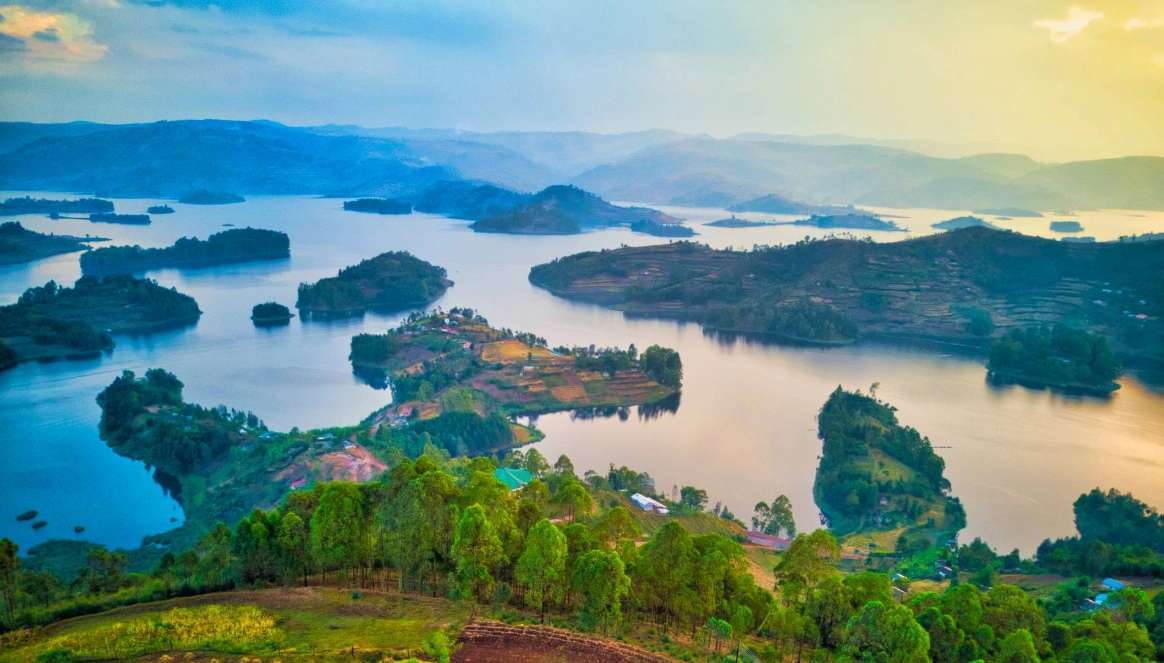
Where is Lake Bunyonyi?
Lake Bunyonyi is located in southwestern Uganda, near the Rwandan border. It sits between the towns of Kabale (approx. 8 km away) and Kisoro (approx. 48 km).
Coordinates: 1.283° S, 29.938° E
Altitude: ~1,962 meters (6,437 ft) above sea level
How to Get There
There are several travel routes to reach the lake:
From Kampala
By bus or matatu: 6.5–8 hours to Kabale
From Kabale to Bunyonyi: 20–30 minutes by car, boda boda, or hired taxi
From Entebbe or Kampala (Domestic Flight Option)
Flight to Kihihi airstrip: ~1.5 hours
Drive to Lake Bunyonyi: 3 hours via scenic countryside
📌 Pro tip: If you’re booking with a tour company, request direct private transfer from Entebbe or Kigali. The route from Rwanda is faster and often more scenic.
Where to Stay at Lake Bunyonyi
Whether you’re a backpacker on a shoestring or a couple seeking eco-luxury, Bunyonyi has something for everyone.
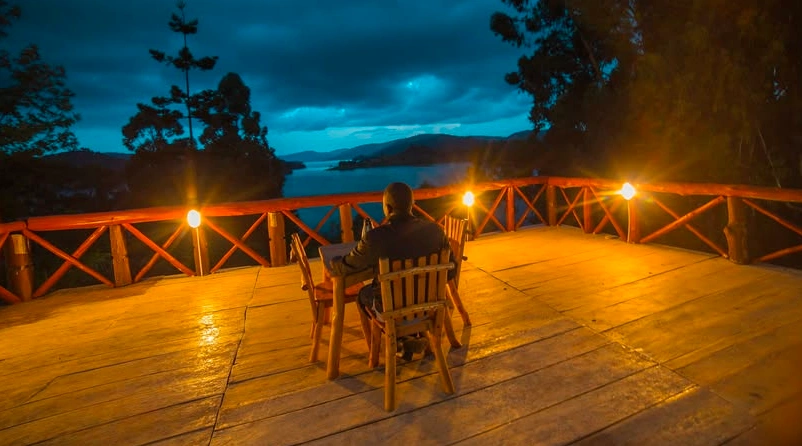
1. Lake Bunyonyi Eco Resort
Located on Kyahugye Island, this resort combines natural elegance with cultural immersion. Great for honeymooners or eco-conscious travelers.

2. Bunyonyi Overland Resort
Budget-friendly and perfect for campers, backpackers, and groups. Offers safari tents, cottages, and mobile tents—plus lake access.

3. BirdNest @ Bunyonyi Resort
One of the most luxurious options on the lake. Known for great service, fine dining, and unbeatable sunset views.
📌Insider Tip: Always book early during high season (June–August and December) to avoid disappointment.
Ecology & Wildlife: A Living Canvas of Nature
Lake Bunyonyi isn’t just beautiful—it’s alive in a quiet, harmonious way that sneaks up on your soul.
This is one of the very few lakes in Africa where you can swim safely without fear of bilharzia, crocodiles, or hippos.
The name “Bunyonyi” itself means “place of many little birds” in the local Rukiga language, and it lives up to that promise.
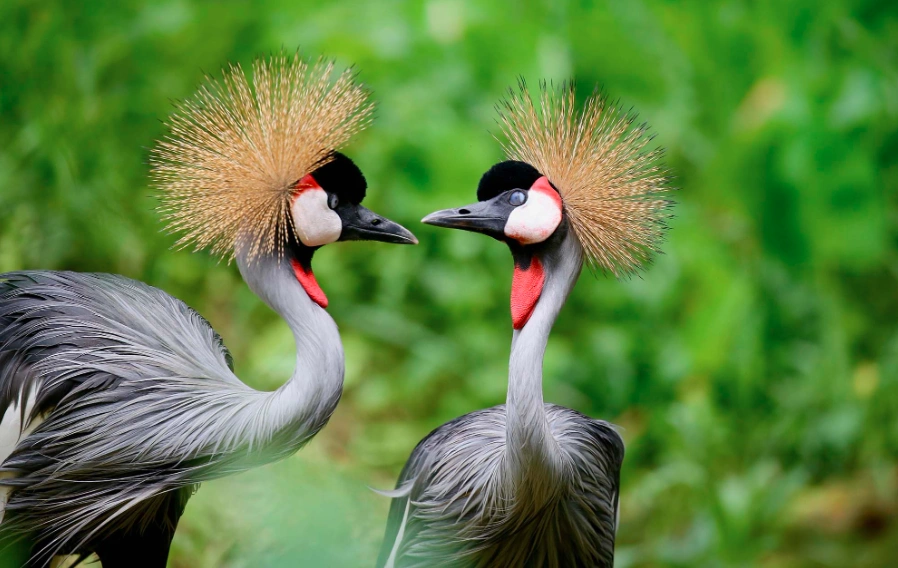
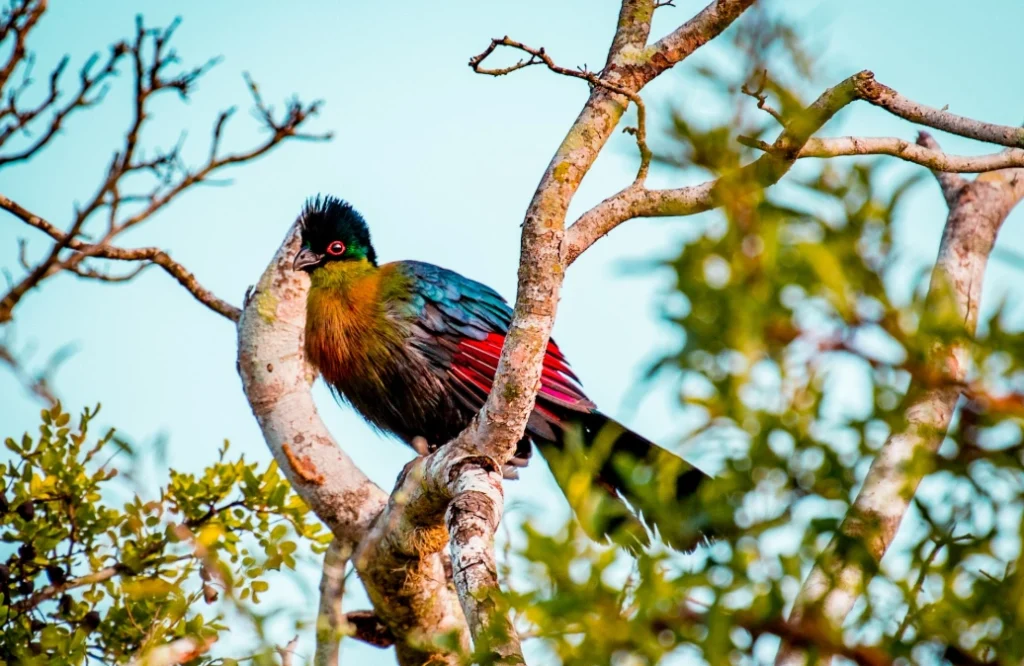
With over 200 bird species recorded, Lake Bunyonyi is a sanctuary for birdwatchers, photographers, and curious travelers alike.
Mornings start with a natural symphony of grey-crowned cranes, malachite kingfishers, weaver birds, herons, and the haunting cry of the African fish eagle echoing over the water. Bring your binoculars—you’ll need them.
It’s the kind of place where you can spend hours sitting still, just observing life flutter around you. Whether you’re an ornithologist or just someone craving peace, the air here feels like it holds secrets, carried by birds’ wings.
While gorilla trekking is the crown jewel, Bwindi’s appeal goes far beyond. This is one of Africa’s most biologically rich ecosystems, home to over 120 species of mammals, 348 species of birds, 220 species of butterflies, and more than 1,000 plant species.
Expect to encounter:
Forest elephants and giant forest hogs in the shadows
Red-tailed and L’Hoest’s monkeys swinging above the canopy
Chameleons, tree frogs, and other reptiles hidden along the undergrowth
You can also indulge in forest hikes, cultural immersions, birding excursions, and community tours that paint a broader picture of this wild, interconnected world.
If you’re lucky—and quiet—you might spot an African clawless otter or its sleeker cousin, the spotted-necked otter, darting through the water or sunbathing on a rock.
These playful mammals are native to the lake and are a delight to see in the wild.
The lake also hosts a subtle but essential aquatic ecosystem made up of small fish species, shrimp, and frogs.
While it’s not known for fishing like Lake Victoria, the water’s biodiversity still plays a vital role in the local environment.
The nearby islands and shores are teeming with terrestrial life.
In the cooler hours, vervet monkeys swing through the trees, and if you head to Kyahugye Island, you might even spot zebras, waterbucks, or impalas, which were introduced to promote eco-tourism.
The surrounding hills are carpeted in papyrus, swamp sawgrass, wild banana, and the striking blue blooms of the Nymphaea caerulea (blue lotus), which add a mystic flair to the already dreamlike landscape.
These plants help purify the water and serve as breeding grounds for frogs and nesting material for birds.
What makes Lake Bunyonyi truly special is the balance—between water and land, wildlife and human presence, quiet and vitality.
There’s no roar of motorboats or invasive developments here. Instead, you find a slow, mindful rhythm of life that invites you to be part of it—if only for a while.
Islands of Lake Bunyonyi: Mystical and Historic
The lake’s 29 islands are steeped in local legend, history, and mystery. Here are the three most famous ones:
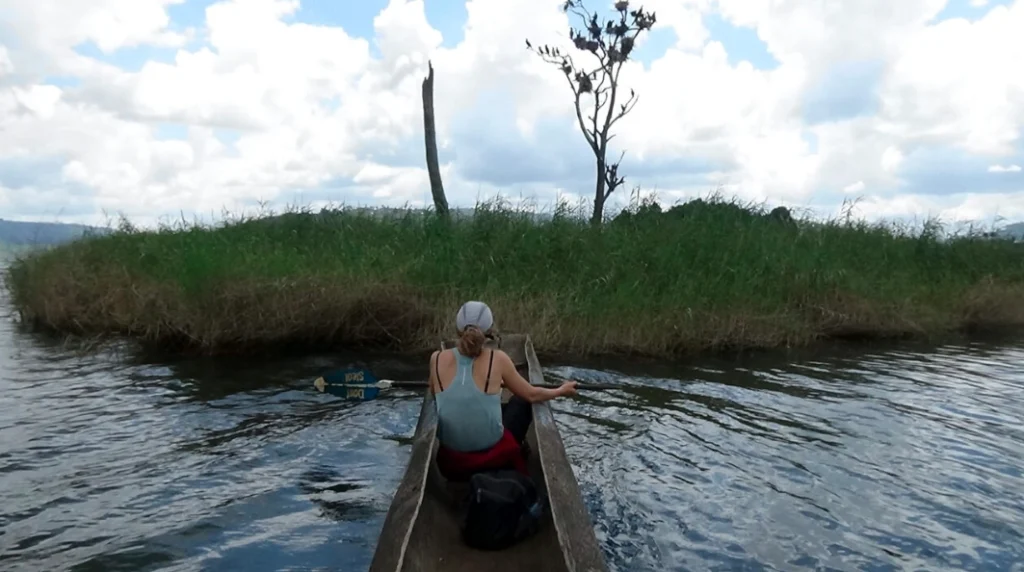
Akampene Island (Punishment Island)
In pre-colonial times, young unmarried pregnant women were abandoned here by their families—left to starve or drown as punishment. Some were rescued by suitors too poor to pay a dowry.
Today, the island stands as a haunting reminder of past cultural norms and a powerful conversation starter on gender and tradition.
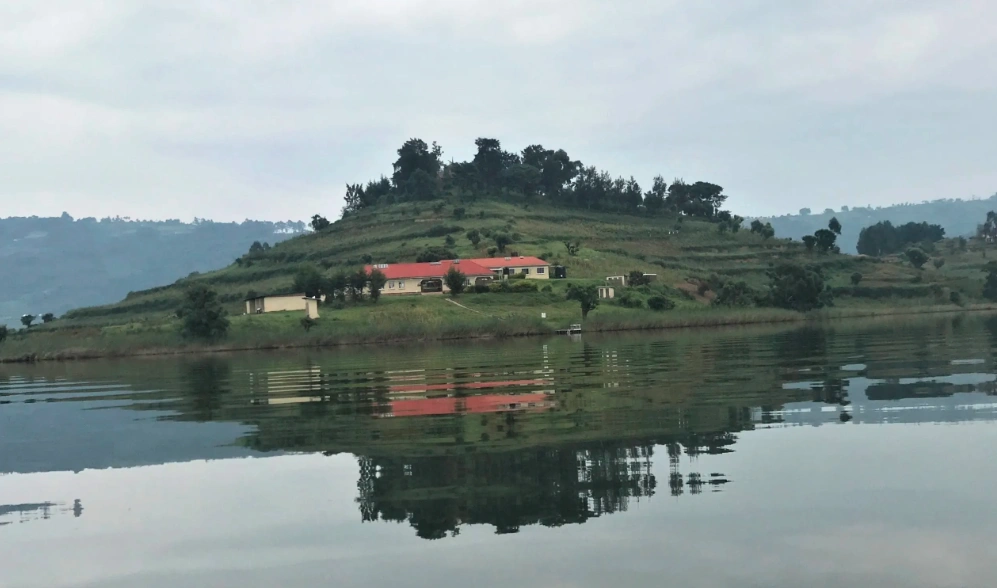
Bwama Island
In 1931, British missionary Dr. Leonard Sharp established a leprosy treatment center here, encouraging patients to voluntarily isolate.
Though the center closed in the 1980s, the island still hosts two boarding schools—its mission preserved in a new form.
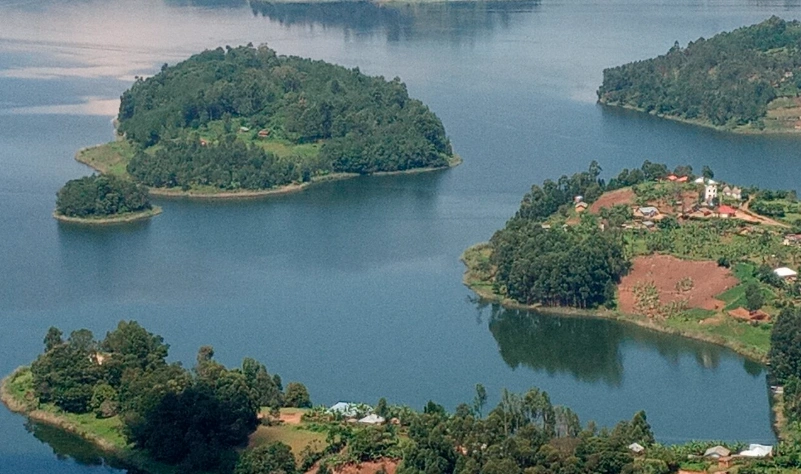
Njuyeera Island (Sharp’s Island)
Home to Dr. Sharp’s family, Njuyeera was once a hub of gardening, hospitality, and colonial-era leisure.
Though now overtaken by a large hotel, stories of White Cottage and its tennis court, guestbook, and school visits remain part of Bunyonyi’s layered heritage.
What to Do at Lake Bunyonyi
This isn’t just a lake for photos—there’s something to do every hour of the day. Here’s how to fill your itinerary:
Swimming
Safe and refreshing—no hippos or crocodiles. Just ask your lodge about the best entry points.
Canoe & Boat Tours
Hire a dugout canoe or take a guided motorboat tour to explore the lake’s islands. Learn local legends and visit historic sites like Akampene or Bwama.
Nature & Community Walks
Explore terraced hills, visit villages, and meet local farmers. You’ll gain cultural insight and stunning landscape views.
Birdwatching
Don’t forget your binoculars. Early morning is best for catching the grey-crowned crane or kingfishers flitting across the misty waters.
When Is the Best Time to Visit Lake Bunyonyi?
Lake Bunyonyi is a year-round destination, but timing your visit just right can elevate the experience from beautiful to unforgettable.
Dry Season (June–August & December–February)
These are the best months to visit. The weather is pleasantly warm during the day and refreshingly cool at night. Clear skies and low humidity make it ideal for birdwatching, photography, hiking, and island-hopping.
If you’re combining your trip with gorilla trekking in nearby Bwindi Impenetrable Forest, this is also prime trekking season due to drier trails.
Rainy Season (March–May & September–November)
While this period brings lush green landscapes and fewer tourists, be prepared for heavy, sometimes sudden rainfall. Some roads—especially to remote lodges—can become tricky.
That said, if you’re looking for solitude, budget-friendly deals, and an intensely vibrant natural setting, the wet season has its own kind of magic.
Special Events & Cultural Festivals
Occasionally, nearby Kabale and Kisoro host cultural events that allow for a deeper connection with the local Bakiga people.
If your travel dates align, these can add incredible dimension to your visit.

